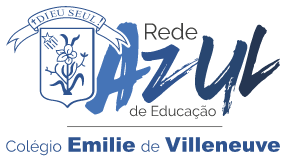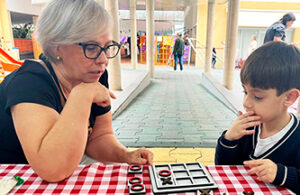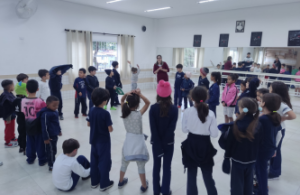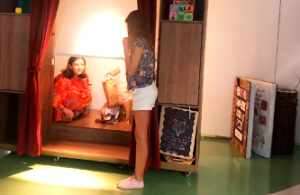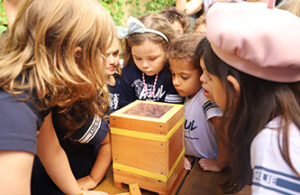Science experiences provide an engaging way for young learners to explore natural phenomena in the world around them. According to studies related to the Building Learning Power approach, BLP for short, it is very important to prepare children to deal with uncertainty and constant changes that require creative thinking, collaboration and problem solving skills. Pupils need to learn how to be inquisitive and imaginative, and during an investigation context about day and night, students had a different experience: they were invited to locate in the globe some countries such as Brazil, Japan, Australia, Portugal among others.
Kids were asked if the time set on our classroom clock is the same time in other places worldwide. Do children around the world go to school exactly at the same time as you? What are they doing now? After a few guesses, pupils watched some live cameras in the chosen places and were able to confirm their hypothesis. Matheus Losito said: “I think the sun is far from Japan and it’s night there”. Davi Pirola said: “My hypothesis is that while the sun is shining on one side of the globe, the moon rises up on the other side”.
But why is it day in one country while is night in another one? In order to find this answer kids placed a flashlight in the globe to represent the sun and they found out that when one part of the globe receives light from the sun, the other part gets dark, then we have the night. In the end, students registered what they had learned in their notebooks with many details, willing for the next experience in which they will learn more about day and night.
******
Investigações sobre o dia e a noite
As experiências científicas fornecem uma maneira envolvente para os jovens alunos explorarem fenômenos naturais no mundo ao seu redor. De acordo com estudos relacionados à abordagem Building Learning Power, BLP, é muito importante preparar as crianças para lidar com incertezas e mudanças constantes que exigem pensamento criativo, colaboração e habilidades de resolução de problemas. Os alunos precisam aprender a ser curiosos e imaginativos, e durante um contexto de investigação sobre dia e noite, os alunos tiveram uma experiência diferente: foram convidados a localizar no globo alguns países como Brasil, Japão, Austrália, Portugal, entre outros.
As crianças foram questionadas se a hora definida no relógio da nossa sala de aula é a mesma em outros lugares do mundo. As crianças de todo o mundo vão à escola exatamente no mesmo horário que você? O que você está fazendo agora? Após alguns palpites, os alunos assistiram a algumas câmeras ao vivo nos locais escolhidos e puderam confirmar suas hipóteses. Matheus Losito disse: “Acho que o sol está longe do Japão e lá é noite”. Davi Pirola disse: “Minha hipótese é que enquanto o sol brilha de um lado do globo, a lua nasce do outro lado”.
Mas por que é dia em um país e noite em outro? Para encontrar essa resposta, as crianças colocaram uma lanterna no globo para representar o sol e descobriram que quando uma parte do globo recebe luz do sol, a outra parte escurece, então temos a noite. Ao final, os alunos registraram em seus cadernos o que aprenderam com muitos detalhes, dispostos para a próxima experiência em que aprenderão mais sobre o dia e a noite.
Ms Narelle Jardim – Head Teacher Grade 1 A




